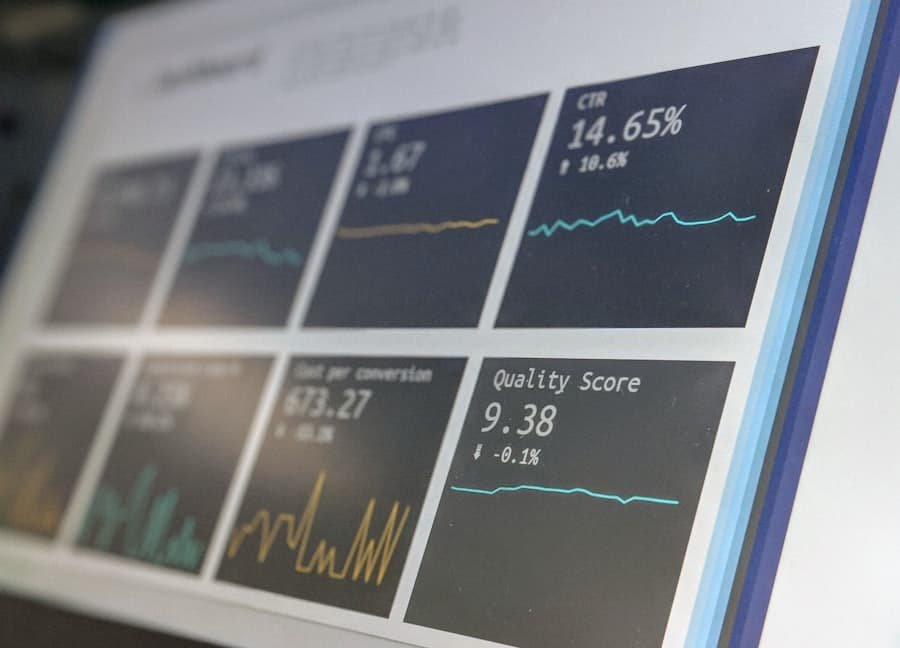Whistleblower analytics is an emerging field that utilises data analysis techniques to enhance the effectiveness of whistleblowing mechanisms within organisations. As businesses face increasing scrutiny from regulators, stakeholders, and the public, the need for robust systems that encourage reporting of unethical behaviour has never been more critical. Whistleblower analytics encompasses a range of methodologies, including data mining, natural language processing, and machine learning, to identify patterns and trends in whistleblower reports.
By leveraging these advanced analytical tools, organisations can not only detect potential misconduct but also foster a culture of transparency and accountability. The significance of whistleblower analytics extends beyond mere compliance; it plays a pivotal role in shaping organisational culture. By analysing the data generated from whistleblower reports, companies can gain insights into the underlying issues that may lead to unethical behaviour.
This proactive approach allows organisations to address systemic problems before they escalate into larger crises. Furthermore, the integration of whistleblower analytics into corporate governance frameworks can enhance decision-making processes, ensuring that leadership is informed by real-time data regarding employee concerns and ethical dilemmas.
Summary
- Whistleblower analytics involves the use of data analysis to identify and investigate potential misconduct within an organisation.
- Whistleblower analytics plays a crucial role in enhancing corporate governance by providing insights into potential risks and unethical behaviour.
- Whistleblower analytics helps in fraud detection by identifying patterns and anomalies in data that may indicate fraudulent activities.
- Whistleblower analytics is essential for regulatory compliance as it helps organisations to identify and address potential compliance issues.
- Whistleblower analytics is important for protecting whistleblowers by providing a secure and confidential platform for reporting misconduct.
The Role of Whistleblower Analytics in Corporate Governance
In the realm of corporate governance, whistleblower analytics serves as a vital tool for enhancing accountability and ethical conduct. By systematically analysing whistleblower reports, organisations can identify trends that may indicate deeper issues within their operational frameworks. For instance, if a significant number of reports stem from a particular department or location, this could signal a toxic work environment or inadequate management practices.
Such insights enable corporate leaders to take targeted actions to rectify these issues, thereby reinforcing the organisation’s commitment to ethical behaviour. Moreover, whistleblower analytics can facilitate more informed risk management strategies. By understanding the types of misconduct that are most frequently reported, organisations can develop tailored training programmes and policies aimed at mitigating these risks.
For example, if data reveals a high incidence of financial misconduct, a company might implement enhanced financial controls or ethics training specifically focused on financial integrity. This proactive stance not only helps in preventing future incidents but also demonstrates to employees that their concerns are taken seriously, thereby encouraging further reporting.
How Whistleblower Analytics Helps in Fraud Detection

Fraud detection is one of the most critical applications of whistleblower analytics. By employing sophisticated analytical techniques, organisations can sift through vast amounts of data to uncover anomalies that may indicate fraudulent activities. For instance, machine learning algorithms can be trained to recognise patterns associated with fraudulent behaviour, such as unusual transaction volumes or discrepancies in financial reporting.
When combined with whistleblower reports, these analytical tools can provide a comprehensive view of potential fraud risks. Additionally, the integration of whistleblower analytics with other data sources enhances the detection capabilities of organisations. For example, by correlating whistleblower reports with financial data, employee performance metrics, and external market conditions, companies can identify red flags that may warrant further investigation.
This holistic approach not only improves the accuracy of fraud detection but also allows organisations to respond swiftly to potential threats. The ability to act on insights derived from data analysis can significantly reduce the financial and reputational damage associated with fraud.
Whistleblower Analytics and Regulatory Compliance
Regulatory compliance is another area where whistleblower analytics proves invaluable. Many industries are subject to stringent regulations that require organisations to maintain robust reporting mechanisms for unethical behaviour. By implementing whistleblower analytics, companies can ensure they are not only meeting these regulatory requirements but also exceeding them.
For instance, analytics can help track the effectiveness of reporting channels and identify any barriers that may prevent employees from coming forward with their concerns. Furthermore, regulatory bodies often look for evidence of a strong compliance culture within organisations. Whistleblower analytics can provide tangible metrics that demonstrate an organisation’s commitment to ethical practices.
By analysing trends in reporting and response times, companies can showcase their dedication to addressing misconduct promptly and effectively. This not only aids in regulatory compliance but also enhances the organisation’s reputation among stakeholders and the public.
The Importance of Whistleblower Analytics in Protecting Whistleblowers
The protection of whistleblowers is paramount in fostering an environment where employees feel safe to report unethical behaviour. Whistleblower analytics plays a crucial role in this regard by helping organisations identify potential risks to whistleblowers and implement measures to mitigate them. For example, data analysis can reveal patterns in retaliation against whistleblowers, allowing companies to take proactive steps to protect those who come forward with information.
Moreover, by analysing feedback from whistleblowers regarding their experiences with reporting mechanisms, organisations can make necessary improvements to ensure confidentiality and support. This could involve enhancing anonymity features or providing additional resources for whistleblowers during the reporting process. By prioritising the safety and well-being of whistleblowers, organisations not only comply with legal requirements but also cultivate a culture of trust and integrity.
Challenges and Limitations of Whistleblower Analytics

Despite its numerous benefits, whistleblower analytics is not without challenges and limitations. One significant hurdle is the potential for data privacy concerns. The collection and analysis of sensitive information related to whistleblower reports must be handled with utmost care to protect the identities of individuals involved.
Organisations must navigate complex legal frameworks surrounding data protection while ensuring that their analytical efforts do not compromise confidentiality. Another challenge lies in the quality and completeness of the data being analysed. Whistleblower reports may vary significantly in detail and context, making it difficult to draw meaningful conclusions from them.
Inconsistent reporting formats or vague descriptions can hinder the effectiveness of analytical tools. To address this issue, organisations must invest in training employees on how to provide comprehensive reports while also standardising reporting processes to facilitate better data collection.
Best Practices for Implementing Whistleblower Analytics
Implementing whistleblower analytics effectively requires a strategic approach grounded in best practices. First and foremost, organisations should establish clear objectives for their analytical efforts. This involves defining what they hope to achieve through whistleblower analytics—be it improved fraud detection, enhanced regulatory compliance, or better protection for whistleblowers.
By setting specific goals, companies can tailor their analytical frameworks accordingly. Additionally, fostering a culture of openness is essential for successful implementation. Employees must feel encouraged to report concerns without fear of retaliation.
This can be achieved through regular communication about the importance of whistleblowing and the measures in place to protect those who come forward. Training sessions that educate employees on how to recognise and report unethical behaviour can further reinforce this culture. Furthermore, investing in advanced analytical tools is crucial for maximising the effectiveness of whistleblower analytics.
Organisations should consider leveraging machine learning algorithms and natural language processing techniques to analyse large volumes of data efficiently. Collaborating with data scientists or external experts can also enhance analytical capabilities and ensure that insights derived from data are actionable.
The Future of Whistleblower Analytics and its Impact on Organizational Culture
As organisations continue to recognise the importance of ethical conduct and transparency, the future of whistleblower analytics appears promising. With advancements in technology and data analysis techniques, companies will be better equipped to detect misconduct early and respond effectively. The integration of artificial intelligence into whistleblower analytics could revolutionise how organisations process and analyse reports, enabling real-time monitoring of potential ethical breaches.
Moreover, as societal expectations around corporate responsibility evolve, organisations that prioritise whistleblower analytics will likely enjoy a competitive advantage. A strong commitment to ethical practices not only enhances reputation but also attracts top talent who value integrity in their workplace. As more companies adopt comprehensive whistleblower analytics programmes, we may witness a shift towards a more transparent organisational culture where employees feel empowered to speak up without fear.
In conclusion, the evolution of whistleblower analytics represents a significant step forward in promoting ethical behaviour within organisations. By harnessing the power of data analysis, companies can create environments where transparency thrives and misconduct is swiftly addressed. As this field continues to develop, its impact on corporate governance and organisational culture will undoubtedly be profound.
Whistleblower Analytics is a crucial tool for detecting and preventing fraud within organisations. This article explores how companies can utilise data analytics to identify potential misconduct and protect their reputation. For further insights into the importance of data analysis in business, check out this article on mastering enterprise networking with Cisco 350-401 certification. By understanding the significance of data analytics and networking, businesses can enhance their operations and safeguard against fraudulent activities.
FAQs
What is Whistleblower Analytics?
Whistleblower analytics is the process of using data analysis and technology to identify and investigate potential instances of fraud, misconduct, or unethical behavior within an organization. It involves the use of advanced analytics tools to detect patterns, anomalies, and red flags in large volumes of data that may indicate fraudulent or unethical activities.
How does Whistleblower Analytics work?
Whistleblower analytics works by collecting and analyzing data from various sources within an organization, such as financial records, employee communications, and transactional data. Advanced analytics techniques, such as data mining, machine learning, and predictive modeling, are used to identify unusual patterns or trends that may indicate fraudulent or unethical behavior. This can help organizations proactively detect and investigate potential misconduct before it escalates.
What are the benefits of Whistleblower Analytics?
The benefits of whistleblower analytics include the ability to proactively identify and address potential instances of fraud, misconduct, or unethical behavior within an organization. By leveraging data analysis and technology, organizations can detect and investigate suspicious activities more efficiently and effectively, ultimately reducing the risk of financial loss, reputational damage, and legal consequences.
What are some common use cases for Whistleblower Analytics?
Common use cases for whistleblower analytics include detecting fraudulent financial transactions, identifying insider trading or market manipulation, uncovering conflicts of interest or bribery, and identifying patterns of employee misconduct or unethical behavior. Whistleblower analytics can also be used to monitor compliance with regulations and internal policies, as well as to identify potential risks and vulnerabilities within an organization.
What are the challenges of implementing Whistleblower Analytics?
Challenges of implementing whistleblower analytics include the need for access to comprehensive and high-quality data, the complexity of analyzing large volumes of data, and the need for advanced analytics expertise and technology. Additionally, organizations may face cultural and organizational barriers to implementing whistleblower analytics, such as resistance to change, lack of awareness or understanding of the benefits, and concerns about privacy and data security.
